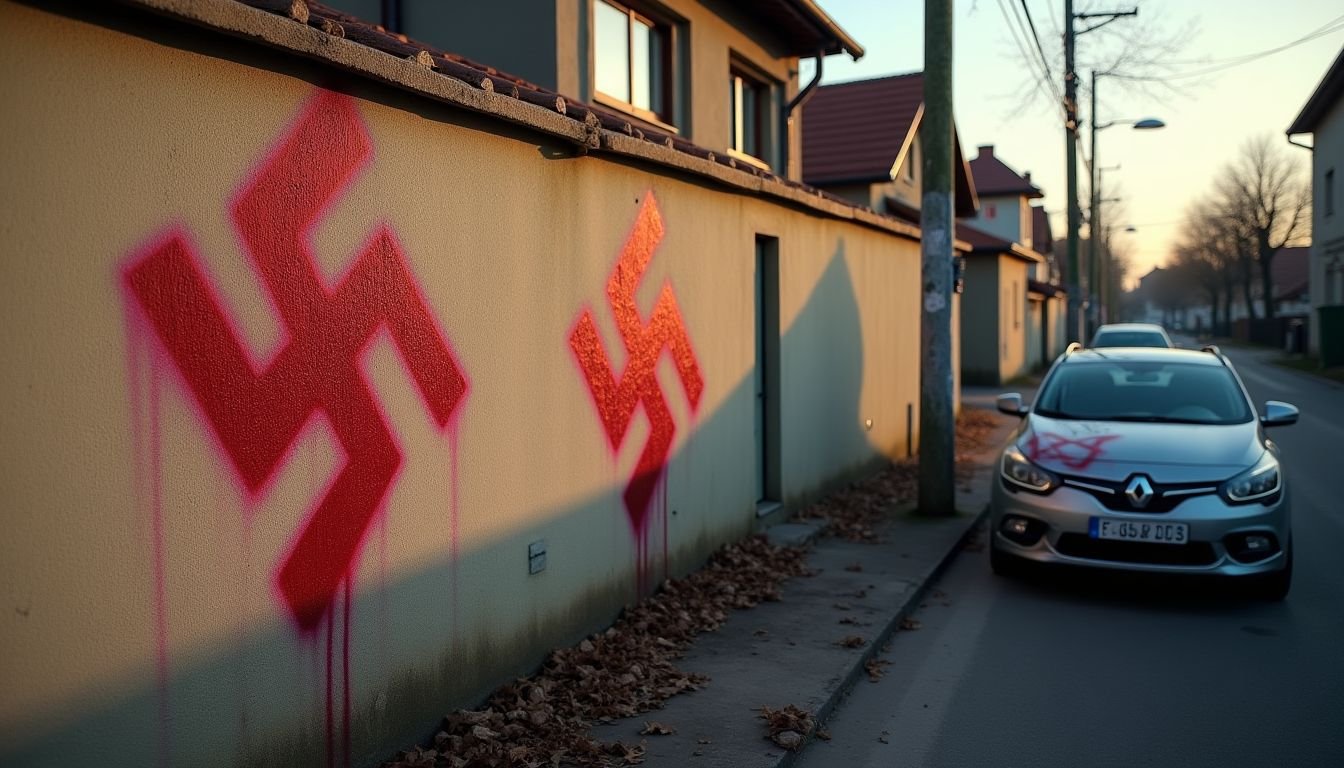Table of Contents
In a deeply troubling incident, the western German city of Hanau has become the focus of an ongoing investigation after several cars and homes were defaced with Nazi symbols. What makes this case particularly grotesque is the reported use of human blood in the creation of these symbols, raising both security and societal concerns.
The presence of these symbols, which are strictly prohibited under German law, highlights a disturbing trend of hate crimes that continue to affect communities across the nation. As investigators delve deeper into this case, the implications for public safety and community relations become increasingly significant.
The context of hate symbols in Germany
Germany has a fraught history with symbols associated with the Nazi regime. The use of swastikas and other Nazi insignia is illegal, as they symbolize a dark past marked by fascism and genocide.
The country has taken a strong stance against the glorification of these symbols, implementing laws that aim to prevent their display and associated hate crimes.
Legal ramifications and societal impact
Under German law, the public display of Nazi symbols can lead to severe legal consequences, including fines and imprisonment.
This legal framework reflects a broader commitment to ensuring that the atrocities of World War II are not forgotten and that similar ideologies do not gain traction in modern society. The ramifications of such acts can extend beyond legal penalties; they can also damage community cohesion and instill fear among residents.
Moreover, the use of blood in such acts elevates the severity of the crime. It serves as a visceral reminder of the violence associated with these ideologies and can provoke intense emotional responses from those who witness or hear about these acts.
Community response and prevention efforts
The community’s reaction to the incidents has been one of outrage and concern. Local leaders, activists, and citizens alike have expressed their dismay at the resurgence of such hate symbols. Community organizations have begun to mobilize, calling for increased awareness and education around the dangers of hate speech and symbols.
Educational initiatives and support networks
In response to these acts, many groups are working to create educational programs that address the history of the Nazi regime and the harmful impact of hate symbols. These initiatives aim to foster understanding and tolerance among younger generations, ensuring that the lessons of the past are not lost. Support networks for those affected by hate crimes are also being established, providing safe spaces for individuals to share their experiences and seek assistance.
The involvement of local authorities and community leaders is crucial in these efforts. By collaborating with educational institutions, they can implement programs that teach the importance of diversity and the dangers of intolerance, reinforcing the message that hate has no place in society.
Looking ahead: the importance of vigilance
As the investigation in Hanau unfolds, it serves as a reminder of the ongoing battle against hate in all its forms. The presence of blood-painted swastikas not only shocks but also calls for a collective response from individuals and communities to stand against such ideologies. Vigilance is key in ensuring that history does not repeat itself and that future generations inherit a society free from hate.
Authorities are urging anyone with information about the incidents to come forward, emphasizing that community involvement is essential in combating hate crimes. Together, the citizens of Hanau and beyond must work to uphold the values of respect and understanding, fostering an environment where diversity is celebrated and hate has no foothold.





